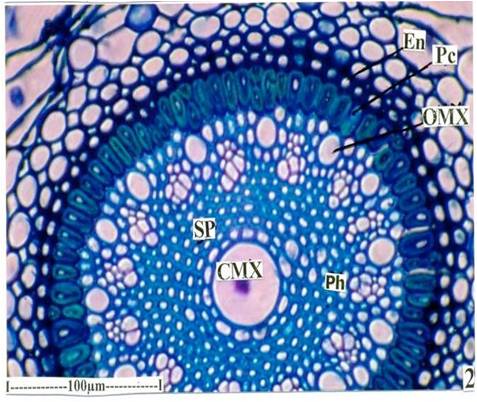Abstract
Kyllinga nemoralis Hutch and Dalz, Family: Cyperaceae is a perennial herb, used in traditional folk medicine to treat many diseases and disorders. The rhizome assorted with milk is consumed as an internal medication for worm infection. The rhizome is used in the treatment of liver damage, disease of spleen, tumour and diabetes. This study has examined the anatomy of root and rhizome with the intention of supply sufficient information to the medicinal plant identification. The root let has prominent papillate rhizodermis, two concentric layers of rectangular cortical cell, an endodermoid layers and pericycle. The cortex of the root has well differentiated three zones of cells. The stele consisted of tetrarch xylem elements alternating with radial arrangement of phloem elements. Xylem and phloem elements were in radial arrangement. The powder microscopy revealed the presence of fibres, fibres sclereids, Parenchyma cells and vessel elements. The pharmacognostical characters witnessed in this study could serve as an anatomical tool to document and standardize the much valued medicinal plant, Kyllinga nemoralis.
Full text article
Generated from XML file
Authors
Rajendiran Krishnasamy, Gomathipriya Jeyapal, Chandrasekar MJN, & Dhanabal SP. (2023). Pharmacognostical studies on root and rhizomes of Kyllinga nemoralis. International Journal of Research in Pharmaceutical Sciences, 8(2), 227–232. Retrieved from https://ijrps.com/home/article/view/4565
Copyright (c) 2017 International Journal of Research in Pharmaceutical Sciences

This work is licensed under a Creative Commons Attribution-NonCommercial-NoDerivatives 4.0 International License.

